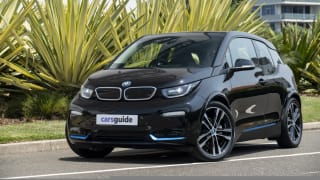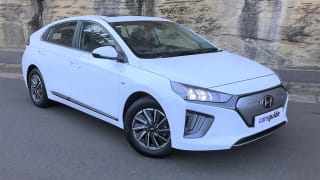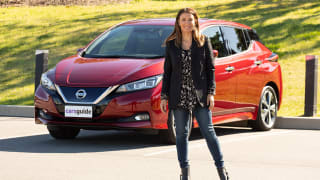The most striking exterior difference between the petrol and electric Kona is the front grille, with the electric car featuring a funky textured plastic panel in its stead.
It also has a reshaped rear bumper and wheels to help prevent resistance through the air and electric badges to call out the difference. It may not be the scream for attention that some drivers want but we prefer the more subtle 'look at me'.

The interior, too, is a touch more reserved than you would expect with the lack of a traditional gear lever and electric motor readouts in the instrument panels the only real reminder that you are doing your bit for the environment.
It's also clear that the price tag reflects the underlying tech rather than plush internals, for while the fit and finish is hard to fault, the materials used are underwhelming.
While the seats are contoured and comfortable, and the dials and knobs look good and feel robust, the metal look on the buttons doesn’t hide the plastics underneath and the door panels also lack that soft touch.


















